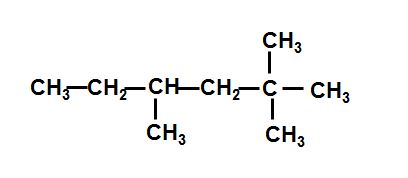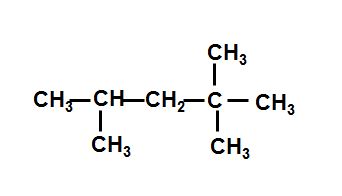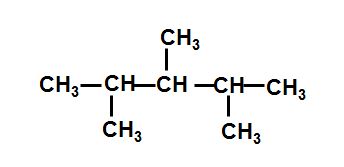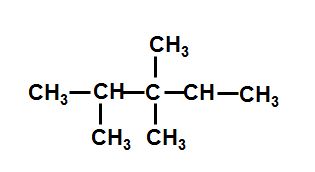
Naming Branched Chained Alkanes
Quiz
•
Chemistry
•
11th - 12th Grade
•
Practice Problem
•
Medium
Standards-aligned

Charles Martinez
Used 2+ times
FREE Resource
Enhance your content in a minute
15 questions
Show all answers
1.
MULTIPLE CHOICE QUESTION
30 sec • 1 pt

How many carbons are in the longest chain of the following molecule:
2.
MULTIPLE CHOICE QUESTION
30 sec • 1 pt
How many carbons are in the backbone (longest chain) of this organic compound: 2,2-dimethylhexane
3.
MULTIPLE CHOICE QUESTION
30 sec • 1 pt

Name the compound.
4.
MULTIPLE CHOICE QUESTION
30 sec • 1 pt
Which is the structures with IUPAC nomenclature
2,2,4-trimethylpentane




5.
MULTIPLE CHOICE QUESTION
30 sec • 1 pt

Give the IUPAC name for this compound
3-methyl-4-ethylhexane
3-ethyl-4-methylhexane
3-methyl-4-ethylheptane
3-ethyl-4-methylheptane
6.
MULTIPLE CHOICE QUESTION
30 sec • 1 pt

Give IUPAC nomenclature for this compound
2,7-dimethyl-5-ethyloctane
5-ethyl-2,7-dimethyloctane
2,7-dimethyl-3-ethyloctane
4-ethyl-2,7-dimethyloctane
7.
MULTIPLE CHOICE QUESTION
30 sec • 1 pt
How many carbons are in the backbone (longest chain) of this organic compound: 2-ethyl-3-chloroheptane
Tags
NGSS.HS-LS1-6
Create a free account and access millions of resources
Create resources
Host any resource
Get auto-graded reports

Continue with Google

Continue with Email

Continue with Classlink

Continue with Clever
or continue with

Microsoft
%20(1).png)
Apple
Others
Already have an account?
Similar Resources on Wayground

12 questions
HOÁ 12 - ÔN TẬP GIỮA KÌ 2
Quiz
•
KG - 12th Grade

16 questions
Evaluación Semanal 1.
Quiz
•
10th - 12th Grade

11 questions
GRUPOS FUNCIONALES -3
Quiz
•
12th Grade

20 questions
Hidrokarbon
Quiz
•
11th Grade

20 questions
HÓA 10 (1+2)
Quiz
•
10th - 12th Grade

13 questions
OCR A Chemistry – 'Y12 Polymers' 4.1.3j-l
Quiz
•
12th Grade

20 questions
benzena
Quiz
•
12th Grade

10 questions
Kuis Sel Volta
Quiz
•
12th Grade
Popular Resources on Wayground

5 questions
This is not a...winter edition (Drawing game)
Quiz
•
1st - 5th Grade

15 questions
4:3 Model Multiplication of Decimals by Whole Numbers
Quiz
•
5th Grade

25 questions
Multiplication Facts
Quiz
•
5th Grade

10 questions
The Best Christmas Pageant Ever Chapters 1 & 2
Quiz
•
4th Grade

12 questions
Unit 4 Review Day
Quiz
•
3rd Grade

10 questions
Identify Iconic Christmas Movie Scenes
Interactive video
•
6th - 10th Grade

20 questions
Christmas Trivia
Quiz
•
6th - 8th Grade

18 questions
Kids Christmas Trivia
Quiz
•
KG - 5th Grade
Discover more resources for Chemistry

20 questions
Unit 6-Review The Mole
Quiz
•
11th - 12th Grade

20 questions
Electron Configuration
Quiz
•
10th - 12th Grade

21 questions
Unit 6 -The Mole Review
Quiz
•
11th - 12th Grade

20 questions
Naming Compounds: Basic Ionic and Covalent Naming
Quiz
•
9th - 12th Grade

20 questions
Naming Covalent Compounds
Quiz
•
11th Grade

20 questions
Balancing Chemical Equations
Quiz
•
10th - 12th Grade

65 questions
Midterm Review Chem
Quiz
•
9th - 12th Grade

35 questions
Chemistry Semester A Final Review
Quiz
•
11th Grade



